- Home
- Graham Hancock
Fingerprints of the Gods Page 14
Fingerprints of the Gods Read online
Page 14
otherwise nutritious vegetables harmless and edible.17 There was as yet
‘no satisfactory explanation for the development of these detoxification
processes’, admitted David Brow-man, associate professor of
Anthropology at Washington University.18
14 Quoted in Earth in Upheaval, citing Sir Clemens Markham, pp. 75-6.
15 Tiahuanacu, III, p. 147.
16 Ibid.
17 David L. Browman, ‘New Light on Andean Tiahuanaco’, in American Scientist, volume
69, 1981, pp. 410-12.
18 Ibid., p. 410. According to Browman: ‘Plant domestication in the Altiplano required the
simultaneous development of detoxifying techniques. The majority of the plants [which
were in regular use in ancient Tiahuanaco] contain significant levels of toxins in an
untreated state. For example, the potato species that are most resistant to frost and that
grow best at high altitudes also contain the highest levels of glycoalkaloid solanine. In
addition, the potato contains an inhibitor for a wide range of digestive enzymes
necessary for breaking down proteins—a particularly unfortunate trait at high altitudes
where differential partial oxygen pressure already impairs the chemistry of protein
breakdown ...’
The detoxification technique developed at Tiahuanaco to make these potatoes edible
also had a preservative effect. Indeed, each of these two important qualities was a byproduct of the other. ‘Altiplano farmers’, explains Browman, ‘have, for several thousand
years produced the freeze-dried potato, or ch’uno, by a process of freezing, leaching,
and sun drying. The initial explanation for this process was that it produced a food
product that could be stored for long periods of time ... six years or more ... But we can
now suggest another rationale. Leaching and sun-drying are necessary to remove the
majority of the solanine and to lower excessive nitrate levels, and the subsequent
cooking of freeze-dried products destroys the inhibitors of digestive enzymes. Rather
than arguing that freeze-drying was motivated only by a desire to produce a secure food
base, one could hold that this technology was mandatory to make the potato available
95
Graham Hancock – FINGERPRINTS OF THE GODS
Likewise, in the same ancient period, somebody as yet unidentified by
scholarship went to great lengths to build raised fields on the newly
exposed lands that had so recently been under the waters of the lake—a
procedure which created characteristic corrugated strips of alternately
high and low ground. It was not until the 1960s that the original function
of these undulating patterns of earthen platforms and shallow canals was
correctly worked out. Still visible today, and known as waru waaru by the
local Indians, they proved to be part of a complex agricultural design,
perfected in prehistoric times, which had the ability ‘to out-perform
modern farming techniques’.19
In recent years some of the raised fields were reconstructed by
archaeologists and agronomists. These experimental plots consistently
yielded three times more potatoes than even the most productive
conventional plots. Likewise, during one particularly cold spell, a severe
frost ‘did little damage to the experimental fields’. The following year the
crops on the elevated platforms survived an equally ruinous drought:
‘then later rode high and dry through a flood that swamped surrounding
farmlands’. Indeed this simple but effective agricultural technique,
invented by a culture so ancient that no one today could even remember
its name, had proved such a success in rural Bolivia that it had attracted
as a usable nutritive source. Both factors are clearly present.
‘The other plants identified as early domesticates at the Titicaca sites have similar
levels of toxins, and all require the use of various detoxification techniques to make
them suitable for human consumption. Oca has significant amounts of oxalates; quinoa
and canihua have high levels of hydrocyanic acid and the alkaloid saponin; amaranth is
a nitrate accumulator and has high levels of oxalates; tarwi contains the poisonous
alkaloid lupinine; beans contain varying levels of the cyanogenetic glycoside
phaseolunatin; and so on ... In some cases the detoxifying procedures serendipitously
result in an end-product that has excellent storage features, multiplying the beneficial
effects of the technology. Where the detoxification technology does not have this added
effect—for example, in the case of quinoa, amaranth and tarwi— the plants generally
already have excellent natural storage characteristics. There is as yet no satisfactory
explanation for the development of these detoxification processes ...’ ‘New Light on
Andean Tiahuanaco’.
19 At the heart of the system were ‘the earthen platforms about 3 feet high, 30-300 feet
long and 10-30 feet wide. These elevated earthworks are separated by canals of similar
dimensions and built out of the excavated soil. Over time the platforms were
periodically fertilized with organic silt and nitrogen-rich algae scooped from the bottom
of the canals during the dry season. Even today ... the sediment in the old canals is
much richer in nutrients than the soil of the surrounding plains.
‘But the platform-canal system was not merely a way of enriching infertile ground. It
also appears to have created a climate that both extended the high-altitude growing
season and helped crops survive hard times. During the area’s frequent periods of
drought, for example, the canals provided vital moisture, while the higher level of the
platforms raised plants above the worst effects of the region’s frequent floods.
Moreover the canal water may have acted as a kind of thermal storage battery absorbing
the sun’s heat during the day and radiating it back into the freezing night, to create a
blanket of relatively warm air over the growing plants.’ Feats and Wisdom of the
Ancients, pp. 56-7.
96
Graham Hancock – FINGERPRINTS OF THE GODS
the attention of governmental and international development agencies
and was now under test in several other parts of the world as well.20
An artificial language
Another possible legacy of Tiahuanaco, and of the Viracochas, lay
embedded in the language spoken by the local Aymara Indians—a
language regarded by some specialists as the oldest in the world.21
In the 1980s Ivan Guzman de Rojas, a Bolivian computer scientist,
accidentally demonstrated that Aymara might be not only very ancient
but, significantly, that it might be a ‘made-up’ language—something
deliberately and skillfully designed. Of particular note was the seemingly
artificial character of its syntax, which was rigidly structured and
unambiguous to an extent thought inconceivable in normal ‘organic’
speech.22 This synthetic and highly organized structure meant that
Aymara could easily be transformed into a computer algorithm to be used
to translate one language into another: ‘The Aymara Algorithm is used as
a bridge language. The language of an original document is translated
into Aymara and then into any number of other languages.’23
Was it just coincidence that a
n apparently artificial language governed
by a computer-friendly syntax should be spoken today in the environs of
Tiahuanaco? Or could Aymara be a legacy of the high learning that legend
attributed to the Viracochas? If so, what other legacies might there be?
What other incomplete fragments of an old and forgotten wisdom might
be lying scattered around—fragments which had perhaps contributed to
the richness and diversity of many of the cultures that had evolved in this
region during the 10,000 years before the conquest? Perhaps it was the
possession of fragments like these that had made possible the drawing of
the Nazca lines and enabled the predecessors of the Incas to build the
‘impossible’ stone walls at Machu Picchu and Sacsayhuaman?
Mexico
The image I could not get out of my mind was of the Viracocha people
leaving, ‘walking on the waters’ of the Pacific Ocean, or ‘going
20 Ibid.
21 Evan Hadingham, Lines to the Mountain Gods, Harrap, London, 1987, p. 34.
22 ‘Aymara is rigorous and simple—which means that its syntactical rules always apply,
and can be written out concisely in the sort of algebraic shorthand that computers
understand. Indeed, such is its purity that some historians think it did not just evolve,
like other languages, but was actually constructed from scratch.’ Sunday Times, London,
4 November 1984.
23 M. Belts, ‘Ancient Language may Prove Key to Translation System’, Computerworld,
vol. IX, No. 8, 25 February 1985, p. 30.
97
Graham Hancock – FINGERPRINTS OF THE GODS
miraculously’ by sea as so many of the legends told.
Where had these seafarers been going? What had their objective been?
And why, come to think of it, had they made such dogged efforts to stay
in Tiahuanaco for so long before admitting defeat and moving on? What
had they been trying to achieve there that had been so important to
them?
After several weeks work on the Altiplano, travelling back and forth
between La Paz and Tiahuanaco, it became clear that neither the
otherworldly ruins nor the libraries of the capital were going to provide
me with any further answers. Indeed, in Bolivia at least, the trail seemed
to have gone cold.
It was not until I reached Mexico, 2000 miles north, that I picked up its
traces again.
98
Graham Hancock – FINGERPRINTS OF THE GODS
Part III
Plumed Serpent
Central America
99
Graham Hancock – FINGERPRINTS OF THE GODS
Chapter 13
Blood and Time at the End of the World
Chicken Itza, northern Yucatan, Mexico
Behind me, towering almost 100 feet into the air, was a perfect ziggurat,
the Temple of Kukulkan. Its four stairways had 91 steps each. Taken
together with the top platform, which counted as a further step, the total
was 365. This gave the number of complete days in a solar year. In
addition, the geometric design and orientation of the ancient structure
had been calibrated with Swiss-watch precision to achieve an objective as
dramatic as it was esoteric: on the spring and autumn equinoxes, regular
as clockwork, triangular patterns of light and shadow combined to create
the illusion of a giant serpent undulating on the northern staircase. On
each occasion the illusion lasted for 3 hours and 22 minutes exactly.1
I walked away from the Temple of Kukulkan in an easterly direction.
Ahead of me, starkly refuting the oft-repeated fallacy that the peoples of
Central America had never succeeded in developing the column as an
architectural feature, stood a forest of white stone columns which must at
one time have supported a massive roof. The sun was beating down
harshly through the translucent blue of a cloudless sky and the cool,
deep shadows this area offered were alluring. I passed by and made my
way to the foot of the steep steps that led up to the adjacent Temple of
the Warriors.
At the top of these steps, becoming fully visible only after I had begun
to ascend them, was a giant figure. This was the idol of Chacmool. It halflay, half-sat in an oddly stiff and expectant posture, bent knees
protruding upwards, thick calves drawn back to touch its thighs, ankles
tucked in against its buttocks, elbows planted on the ground, hands
folded across its belly encircling an empty plate, and its back set at an
awkward angle as though it were just about to lever itself upright. Had it
done so, I calculated, it would have stood about eight feet tall. Even
reclining, coiled and tightly sprung, it seemed to overflow with a fierce
and pitiless energy. Its square features were thin-lipped and implacable,
as hard and indifferent as the stone from which they were carved, and its
eyes gazed westwards, traditionally the direction of darkness, death and
the colour black.2
1 Mexico, Lonely Planet Publications, Hawthorne, Australia, 1992, pp. 839.
2 Ronald Wright, Time Among the Maya, Futura Publications, London, 1991, pp. 343.
100
Graham Hancock – FINGERPRINTS OF THE GODS
Chichen Itza.
Rather lugubriously, I continued to climb the steps of the Temple of the
Warriors. Weighing on my mind was the unforgettable fact that the ritual
of human sacrifice had been routinely practised here in pre-Colombian
times. The empty plate that Chacmool held across his stomach had once
served as a receptacle for freshly extracted hearts. ‘If the victim’s heart
was to be taken out,’ reported one Spanish observer in the sixteenth
century,
they conducted him with great display ... and placed him on the sacrificial stone.
Four of them took hold of his arms and legs, spreading them out. Then the
executioner came, with a flint knife in his hand, and with great skill made an
incision between the ribs on the left side, below the nipple; then he plunged in his
hand and like a ravenous tiger tore out the living heart, which he laid on the plate
...3
What kind of culture could have nourished and celebrated such demonic
behaviour? Here, in Chichen Itza, amid ruins dating back more than 1200
years, a hybrid society had formed out of intermingled Maya and Toltec
elements. This society was by no means exceptional in its addiction to
cruel and barbaric ceremonies. On the contrary, all the great indigenous
civilizations known to have flourished in Mexico had indulged in the
ritualized slaughter of human beings.
Slaughterhouses
Villahermosa, Tabasco Province
I stood looking at the Altar of Infant Sacrifice. It was the creation of the
3 Friar Diego de Landa, Yucatan before and after the Conquest (trans, with notes by
William Gates), Producción Editorial Dante, Merida, Mexico, 1990, p. 71.
101
Graham Hancock – FINGERPRINTS OF THE GODS
Olmecs, the so-called ‘mother-culture’ of Central America, and it was
more than 3000 years old. A block of solid granite about four feet thick,
its sides bore reliefs of four men wearing curious head-dresses. Each man
carried a healthy, chubby, struggling infant, whose desperate fear was
clearly visible. The back of the altar was undecorated; at the front another
figure was portrayed, holding in his arms, as though it were an offering,
the slumped body of a dead child.
The Olmecs are the earliest recognized high civilization of Ancient
Mexico, and human sacrifice was well established with them. Two and a
half thousand years later, at the time of the Spanish conquest, the Aztecs
were the last (but by no means the least) of the peoples of this region to
continue an extremely old and deeply ingrained tradition.
They did so with fanatical zeal.
It is recorded, for example, that Ahuitzotl, the eighth and most
powerful emperor of the Aztec royal dynasty, ‘celebrated the dedication
of the temple of Huitzilopochtli in Tenochitlan by marshalling four lines
of prisoners past teams of priests who worked four days to dispatch
them. On this occasion as many as 80,000 were slain during a single
ceremonial rite.’4
The Aztecs liked to dress up in the flayed skins of sacrificial victims.
Bernardino de Sahagun, a Spanish missionary, attended one such
ceremony soon after the conquest:
The celebrants flayed and dismembered the captives; they then lubricated their
own naked bodies with grease and slipped into the skin ... Trailing blood and
grease, the gruesomely clad men ran through the city, thus terrifying those they
followed ... The second-day’s rite also included a cannibal feast for each warrior’s
family.5
Another mass sacrifice was witnessed by the Spanish chronicler Diego de
Duran. In this instance the victims were so numerous that when the
streams of blood running down the temple steps ‘reached bottom and
cooled they formed fat clots, enough to terrify anyone’.6 All in all, it has
been estimated that the number of sacrificial victims in the Aztec empire
as a whole had risen to around 250,000 a year by the beginning of the
sixteenth century.7
What was this manic destruction of human life for? According to the
Aztecs themselves, it was done to delay the coming of the end of the
world.8
4 Joyce Milton, Robert A. Orsi and Norman Harrison, The Feathered Serpent and the
Cross: The Pre-Colombian God-Kings and the Papal States, Cassell, London, 1980, p. 64.
5 Reported in Aztecs: Reign of Blood and Splendour, Time-Life Books, Alexandria,

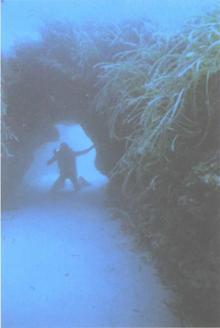 Underworld: The Mysterious Origins of Civilization
Underworld: The Mysterious Origins of Civilization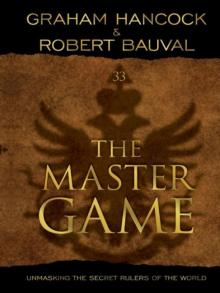 The Master Game: Unmasking the Secret Rulers of the World
The Master Game: Unmasking the Secret Rulers of the World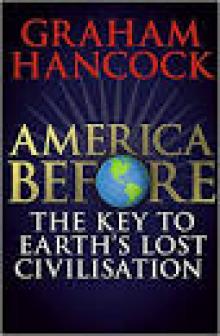 America Before
America Before Entangled
Entangled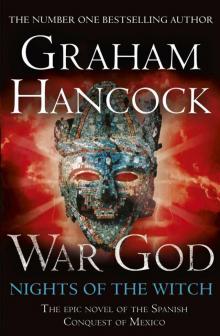 War God: Nights of the Witch
War God: Nights of the Witch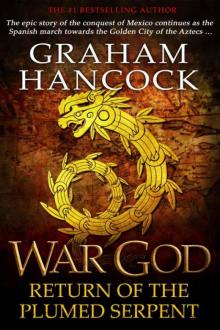 War God: Return of the Plumed Serpent
War God: Return of the Plumed Serpent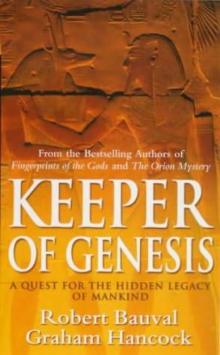 The Message of the Sphinx AKA Keeper of Genesis
The Message of the Sphinx AKA Keeper of Genesis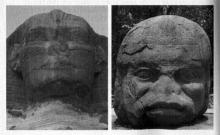 Fingerprints of the Gods
Fingerprints of the Gods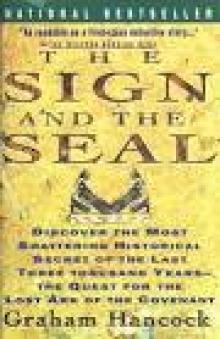 The Sign and the Seal
The Sign and the Seal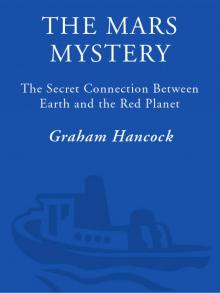 The Mars Mystery: The Secret Connection Between Earth and the Red Planet
The Mars Mystery: The Secret Connection Between Earth and the Red Planet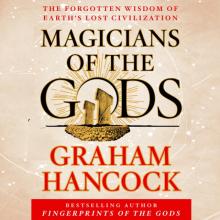 Magicians of the Gods: The Forgotten Wisdom of Earth's Lost Civilization
Magicians of the Gods: The Forgotten Wisdom of Earth's Lost Civilization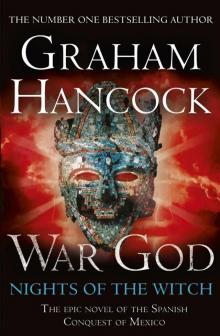 War God
War God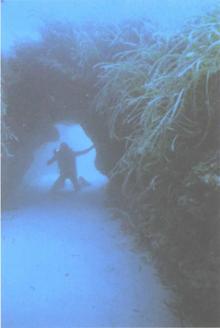 Underworld
Underworld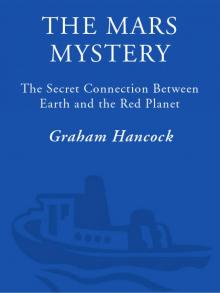 The Mars Mystery
The Mars Mystery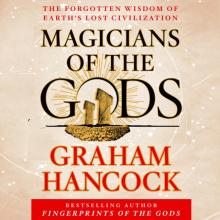 Magicians of the Gods
Magicians of the Gods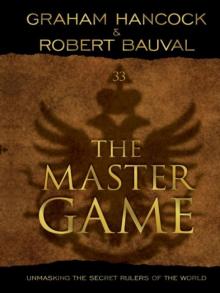 The Master Game
The Master Game